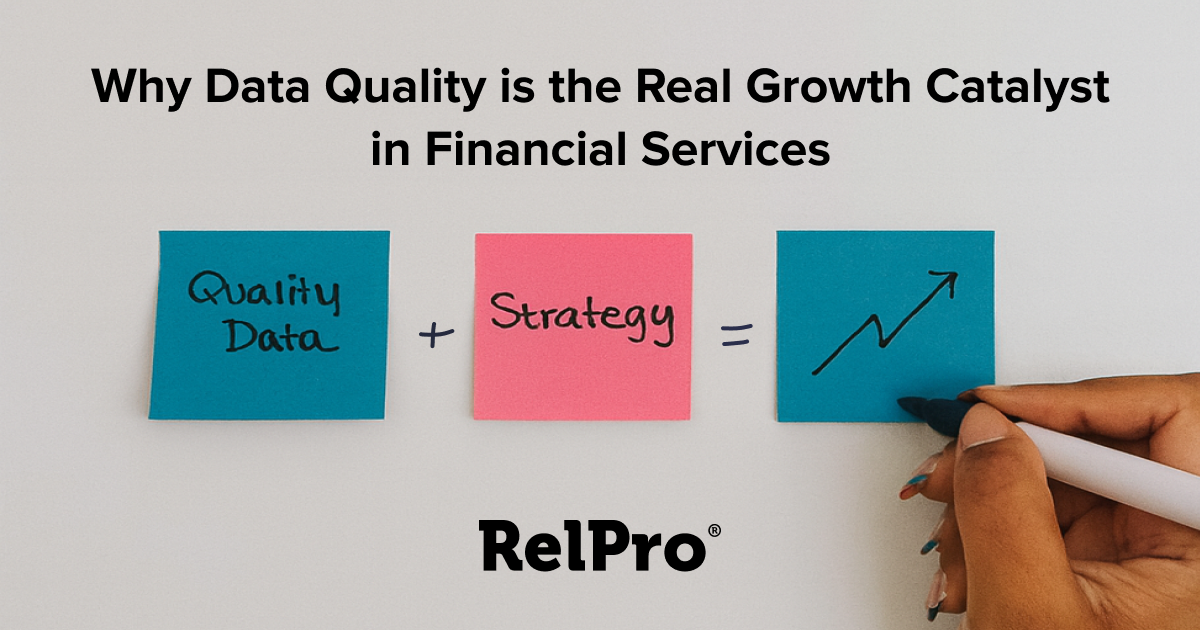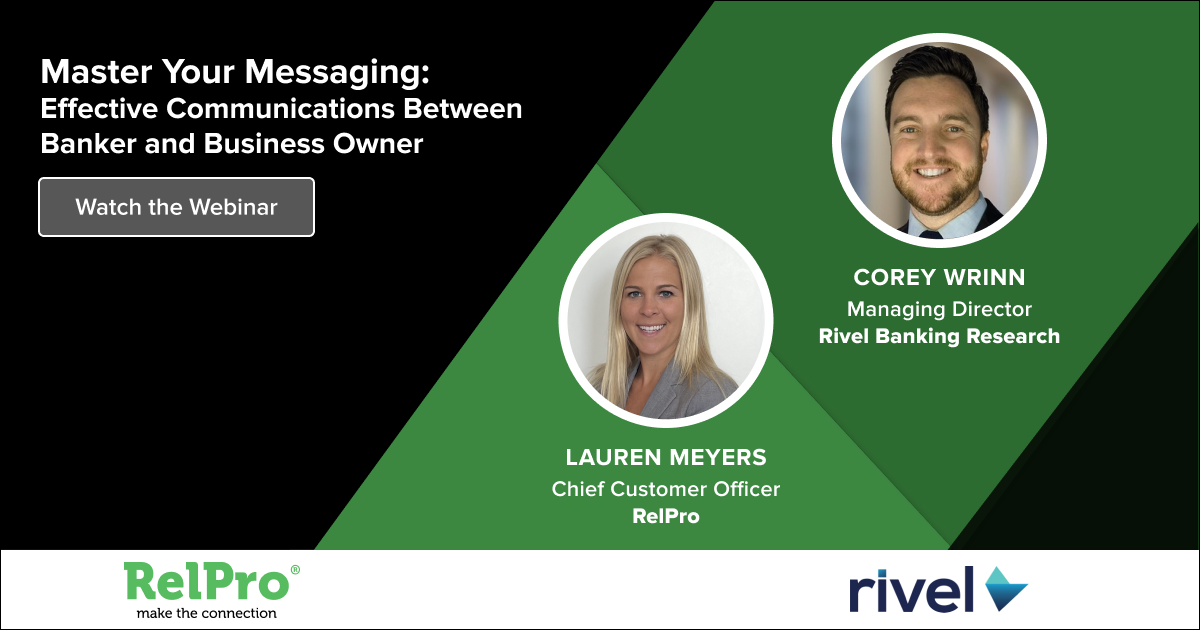6 Prospecting Mistakes and How to Avoid Making Them

The primary goal of your business development initiatives is to book more meetings with quality prospects. To do this effectively takes preparation, practice and a valuable message to offer your target audience. While the formula may sound simple, effective prospecting presents plenty of challenges. Whether it’s individuals not responding to your outreach, a lack of leads or a message that needs tweaking, understanding your potential pitfalls, and how to avoid them, can jumpstart your prospecting and generate more meaningful meetings. In a recent joint webinar with Rivel and RelPro, Joe Micallef, CEO at Grow Up Sales Consulting, highlighted six mistakes common to prospecting.
1. Poor target list and market research
No matter how good you are on the phone, if you’re calling the wrong people, you won’t find the success you’re seeking. Before you start your outreach, you need to know who to contact, both on the company and individual level. You also need to ensure you have the proper parameters for your outreach based on territory, industry, company size, role and any other items based on who would benefit most from your products or services.
Developing your list may seem tedious. However, RelPro has designed a business development and relationship management solution to simplify the process. With the ability to perform targeted searches for companies within your defined market, not only can you quickly identify relevant companies to go after and their key financial decision makers, you can also update yourself on recent activity within these prospect companies. RelPro’s database of more than 7 million companies and 150 decision makers enables searches by geography, industry, revenue range, loan filing history, buyer intent and more, so you can sound like an expert when you make your outreach.
“Today, there is so much information available on the internet. It could take you hours or weeks to come up with relevant insights to reach out to someone and sound knowledgeable,” says Lauren Meyers, VP of Partnerships & Customer Success at RelPro.
Partnering with RelPro can help you build a prospect list in a matter of minutes and establish connections to bolster your outreach initiatives.
2. Lack of understanding of target market needs
Your market research isn’t complete once you’ve determined who it is you want to contact. You still need to understand why you’re contacting them. Prospecting without a clear understanding of what your target market is looking for leaves you without a direction for your pitch. How can you craft an effective message that adds value if you don’t know what problem or issue you are trying to solve? How can you motivate a prospect to meet with you, much less land the deal? Without value, you’re simply noise.
To avoid this mistake, you need to do your homework. Working with a strategic partner like Rivel, Inc. is a great way to define your target market area. Rivel specializes in consumer sentiment research in the banking industry, conducting 280,000 surveys each year to clarify consumers’ experiences and pain points with financial institutions. Having this insight ahead of your outreach can give you a headstart on knowing exactly where to target.
“You want to build rapport and credibility,” notes Corey Wrinn, Managing Director at Rivel. “How do you do it? Know what their problem is before you talk to them.”
Wrinn and his team can target that information down to the zip code to help determine vulnerabilities within your territory. From there, you can leverage that information to drive your decisions on how and where to bring in new customers.
3. It’s about you and not them
Once you’ve determined your target market, developed your call list and understand what that prospect needs, it’s time to craft your message. Making your outreach about your solution instead of your prospect’s concerns will leave your message stuck as unread in an inbox.
Instead of leading with your solution, highlight the prospect’s issue and how you can solve it. Tap into the research you’ve done and craft your message to address your prospect’s needs. Framing a message to fit your specific prospect and their needs before discussing your solution elevates you to a position of knowledgeable advisor, not just another salesperson.
4. “I want to learn more about your business”
Certainly, you want to learn more about your prospect, but that’s no excuse to go into an interaction unprepared. Remember, you are reaching out to them, not the other way around. If you can’t demonstrate your knowledge of their business and the value you can provide, a business owner has no motivation to give you more information about their business and their needs. While they may have questions to get to know you better, it’s incumbent upon you to come prepared with an understanding of your prospect and how you can help.
Leveraging market research from a partner like Rivel can provide you with context on the challenges businesses in your prospect’s market tend to face. And with in-depth company and executive information from RelPro, you can find a creative and impactful way to introduce yourself and make a connection right off the bat. You’ve identified specific issues already, so demonstrating that you know your prospect’s business will immediately add value to your conversations.
5. “I want to show you how we can help”
A general statement like this makes for a bland message that’s been heard before. Of course you want to show how you can help, and your prospect knows this. However, a general statement lacks a differentiator and does nothing to add value or incentivize further discussion. Your prospect understands that you are calling with the intent to show how you can help, so introduce the value upfront.
“Be an expert and be specific,” says Micallef. “It’s okay to be specific. That makes you more relatable and shows that you know about their market.”
Share a brief description of your solution that ties back to their specific problem to generate further interest. You may not have the opportunity to demo your solution on that first contact, but that's not your goal. The goal of your initial outreach is to schedule a more in-depth follow up meeting. That’s your time to shine. If they are taking your call or responding to your email, it’s because they want to see what you have to offer.
6. “I just want 10 minutes of your time”
Thinking back to all of your meetings with prospects, have any of them actually taken 10 minutes and led to a positive result? No meeting takes 10 minutes. You know that and so do your prospects. Setting such an expectation is setting yourself up for the dreaded “over-promise, under-deliver.” By setting an unreasonable time limit for yourself, you are disrespecting your own process as well as their time.
Be clear and honest with the time you need. You are a professional and you can bring value to your prospect. Let them know this will take some time. Show them the value you can add to assure them that you won’t waste their time. Level set with a clear expectation, and then knock your pitch out of the park when you get the meeting.
Crafting your message
Avoiding the mistakes above is crucial to landing more meetings. By refining your message with your market research and target list at hand, you can develop and refine a customized message to add value and make an impact on your audience.
Micallef suggests following the “W.I.S.H.” method to structure your outreach:
- Introduce WHO you are and make a connection.
- Highlight their ISSUE.
- Briefly describe your compelling SOLUTION.
- Outline HOW you want to next engage.
Crafting your message along these guidelines gives your audience the information they need to know about you while you focus on them. You give your prospects a reason to want another meeting while setting a clear call to action for your next engagement. With the right tools and preparation, you can boost your outreach and generate more high-quality meetings through your prospecting.
If you’re interested in learning more about Grow UP Sales, RelPro or Rivel reach out to:
Joe Micallef, Grow UP Sales, joe@growupsales.com
Corey Wrinn, Rivel, cwrinn@rivel.com
Lauren Meyers, RelPro, lmeyers@relpro.com
Related Blogs & Webinars
View All









